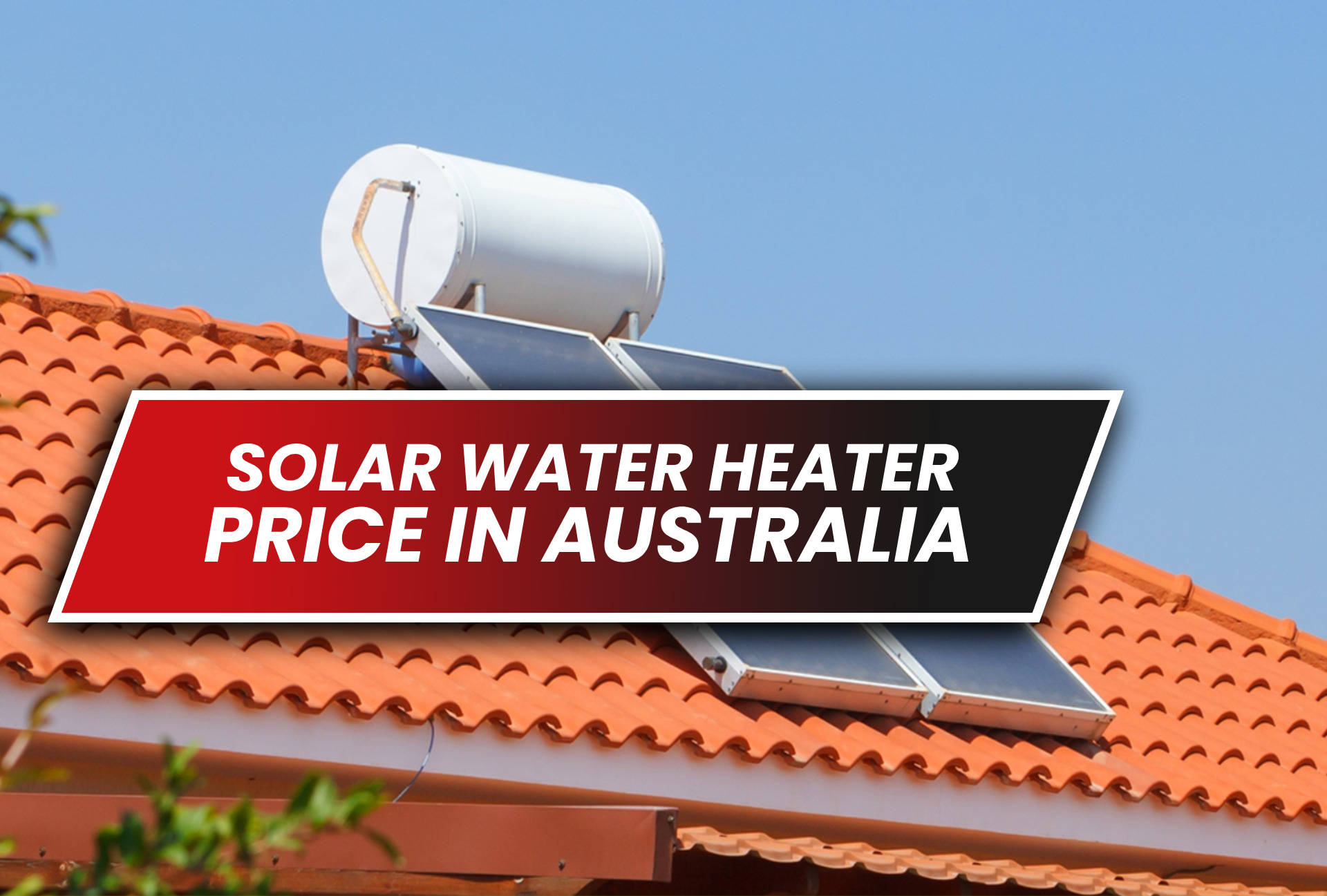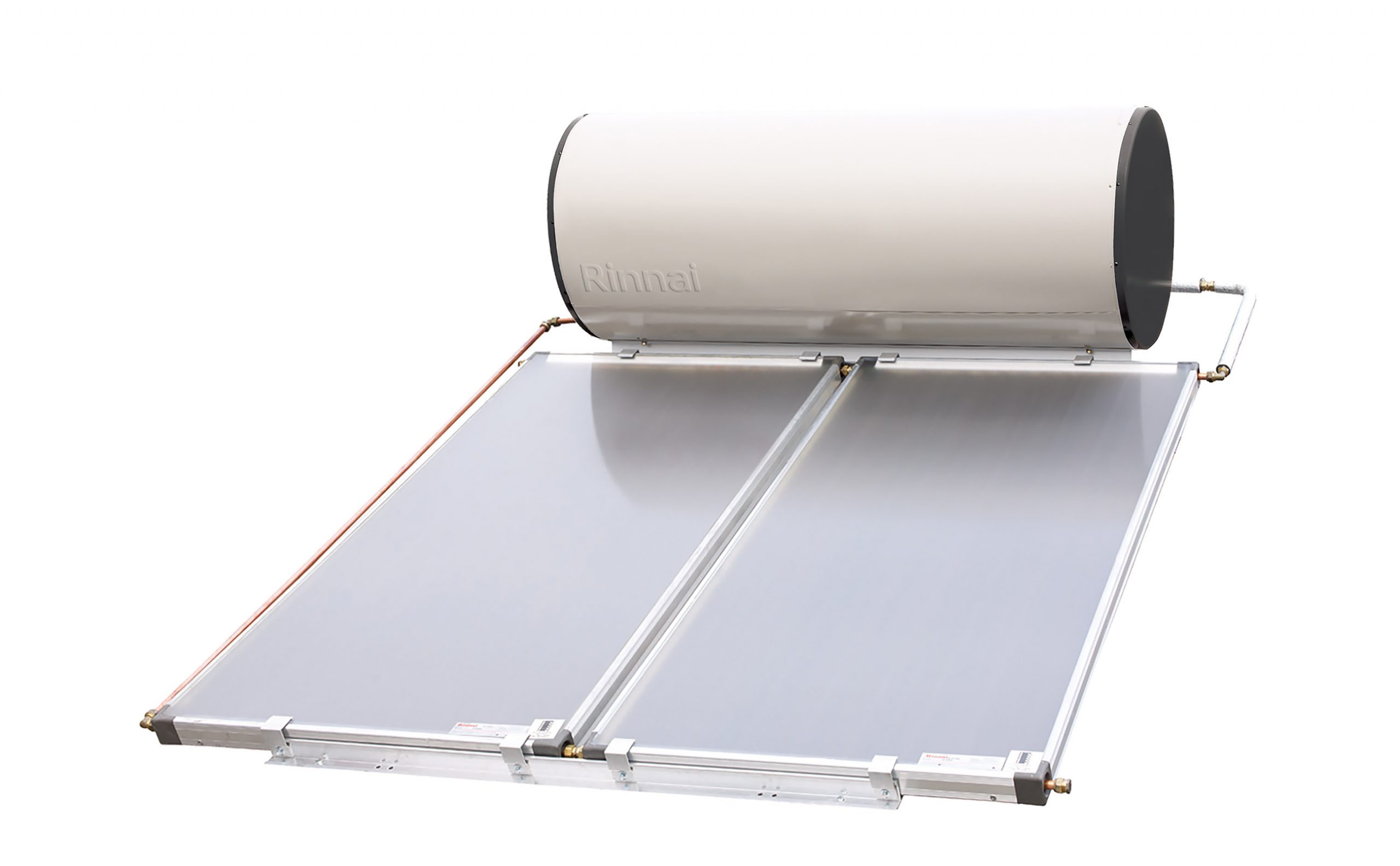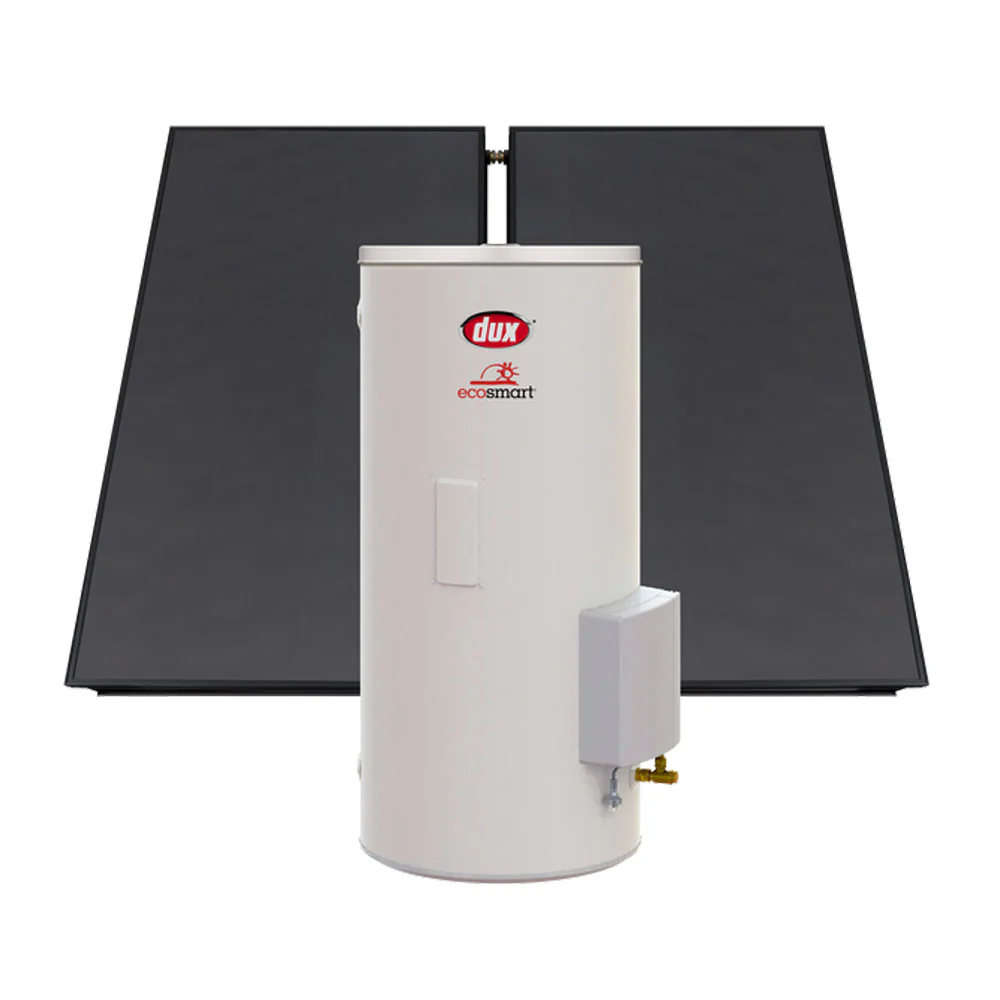
Hot water systems rarely get attention until they fail or the power bill arrives. Yet in many Australian homes, water […]

Price Range: $2,000 – $7,500 total (including installation)
Regional Price Variations:
Melbourne: Slightly higher due to weather conditions
Major Brand Pricing:
Price Influencing Factors:
Australia has abundant solar energy, making it ideal for efficiently operating solar hot water systems.
The sun’s heating energy is the only power source for these systems. Solar water heaters raise water temperatures by several degrees and are used for home or commercial applications.
The technology involved in transferring solar energy into water is simplistic, renewable, and sustainable compared to electric and gas heating techniques.
There are many solar water heater brands in Australia. To buy one, you must understand the types and configurations of various solar water heaters available in the Australian market.
The types, locations, regional grants, and rebates influence the cost of these devices. This article details what to consider when installing a solar water heater.
Solar hot water systems have several components, including a storage tank, steel or plastic pipes, solar collectors, and fittings. The collector is exposed to sunlight; it receives solar energy and concentrates the heat on a pipe containing water. The heat is transferred onto the water, increasing the temperature by several degrees.
The heated water can then be supplied in buildings or stored in suitable storage for future use.
To effectively supply hot water, it has to flow through the collector with either a pump or the force of gravity. A collector can be a flat plate or an evacuated tube.
The flat plate collector has a basic design and is the most affordable, with an installation price between $2,000 and $4,000. Due to their concave shape, evacuated tubes are more complex in design and are more expensive, costing around $4,000 to $7,000.
There are two main types of solar water heaters. The first is the active system, which requires a pump to drive the water flow through the collector. Using this type of collector can add to your energy bill because the pump requires power.
The second type is the passive system. They rely on gravity and do not require a pump to flow water. These systems are cheaper to run.
Based on the types and categories of solar hot water systems discussed, the price range is between $2,000 and $7,000. Several factors, including the system size, type of collector, installation costs, etc., determine prices.
The bigger the system, the more you should be willing to pay because the prices increase. Professional installers also charge anywhere from $300 to $1,500, depending on your location and the complexity of the installation. The following section presents a detailed cost breakdown based on system type.
The prices of different types of solar hot water systems and their installation fees vary. Flat plate collector systems cost between $2,000 and $4,000, while evacuated tube collectors cost between $4,000 and $7,000. Additional installation fees may cost between $300 and $1,500, bringing the estimated cost of acquiring a hot solar system to between $3,000 and $7,500.
The prices of solar hot water systems vary remarkably in Australia’s regions. Prices are dictated by the difference in climatic conditions from the south to the north of the country. Government incentives and rebates also exist in some states.
In Perth, for instance, a solar water heater costs between $3,500 and $5,500. That city is ideal for water heating because of its sunny weather. For Brisbane, it still is below a low of between $3,200 and $5,200. Of course, the cost may be cheaper due to the usual sunlight.
Adelaide prices range from $3,300 to $5,400, which is also competitive. The climatic condition favours solar heating in this region. Lastly, Melbourne’s unpredictable weather patterns call for solar systems to work harder, so prices may be slightly higher.
When considering the cost of solar water heaters, your location is not the only factor that determines what you pay; climatic conditions, local regulations, and the availability of installers are also factors.
An ideal climate for a solar water heater to work efficiently is one with consistent sunlight. If you live in a region that fits this description, your collector’s surface area will be smaller than that required in colder climates.
You can get the details from the manufacturer or obtain information from a consultant. This can help with significant savings, especially when on a budget. Those in colder climates need solar hot water systems with larger surface areas to achieve appreciable heating efficiencies.
Every state has regulations for solar water heaters that are peculiar to them. The amount you must pay on value-added tax may vary from place to place. Also, your state may have standards that will make overall prices higher or lower.
You need to consider the availability of skilled installers in your vicinity.
While experienced professionals may make you incur more expenses, they are reliable, and you may only need to spend occasionally on maintenance down the line. You can also look for installers from companies that offer bonuses and excellent after-sales services.
Due to its sunny climate, Australia is a great place to install solar water heaters, with various configurations and sizes to fit all demands and purchasing strengths. Here are a few of the solar hot water systems that are available in Australia

The top brand to consider is Rinnai. The company offers various easy-to-install and efficient solar hot water systems. It also provides gas or electric boosters for cold climatic regions and periods of low solar intensity.
One of their exemplary models is the Sunmaster range, which comprises close-coupled, flat plate, and evacuated tube systems. Also, Rinnai’s Prestige Solar Water Heater is designed to reduce electricity consumption by two-thirds when replacing an electric storage heater.
It is an eco-friendly option that does not compromise performance.
The company also makes a 250-litre solar hot water system, which can cost around $38.90 per week over three years for a single-storey residential building, while a 315-litre system is approximately $39.90 per week for the same period.
If you are considering a more extensive 400-litre split system, you can expect to budget about $41.90 per week.
Rinnai solar water heaters in Australia typically range from $3,000 to $7,000, depending on the model and system configuration. The price can vary based on the type of solar collector, tank size, and whether the system is active or passive. Passive systems, which are simpler and less expensive, usually fall between $3,000 and $5,500. Active systems, which are more efficient, generally cost between $4,000 and $7,000.

Dux is synonymous with solar hot water systems in the Australian market. It is also a trustworthy brand that provides various solutions for local conditions. For every homeowner, there is an ideal Dux brand that will meet his hot water needs.
Among their spectacular products is the Dux Sunpro Solar Hot Water System, whose prices vary between $3,700 and $4,400.
The products appeal to those willing to transition from conventional heating sources like gas and electricity to solar heating technology. Investing in this system will give you peace of mind, save money, and help protect the environment because it does not contribute to gas emissions or environmental degradation.
The Dux brand is unique because it is committed to providing solutions for solar hot water all year round, no matter the weather. Some of its models come with gas or electric boosters to support inadequate solar intensity on cloudy days.
Dux Ecosmart 400L 2-Panel Electric Boosted Solar Water System: Priced around AUD 5,490, this system includes high-performance solar collectors and is designed for larger households. Dux Ecosmart 315L 2-Panel Electric Boosted System: Typically suited for 3-5 people, this model costs around AUD 4,500, offering substantial savings on energy bills.

Apricus specialises in producing evacuated tube solar hot water systems effective in cooler climates. The systems are designed to maximise heat absorption and provide hot water continuously, even on days with low solar intensities.
The Apricus products are versatile and can be installed in various configurations, depending on the configuration of homes or buildings. Their solar hot water systems are generally priced between $4,000 and $4,700.
A 250L tank with 22 evacuated tubes costs around $3,260. Larger systems or models with added features, like gas or electric boosters, can increase in price, with typical ranges between $3,000 and $6,500 depending on capacity and installation requirements

Another famous brand in the Australian solar hot water system market is Rheem. They offer a wide range of reliable solar water heaters designed to satisfy every user’s needs, no matter your expectations, through innovation.
These systems include the Loline® and Hiline® series.
They feature roof-mounted collectors that efficiently capture heat from the sun. The heat energy is then transferred to stored water at the roof or ground level. Based on the natural thermosiphon phenomenon, hot water rises effortlessly from the collectors to the storage tank.
Rheem makes it easy for many families to invest in solar technology. For instance, the 250-litre Rheem Solar Hot Water Heater (Loline) costs around $39.90 per week over three years for a single-storey home.
The 315-litre Split System is about $41.50 per week.
The larger 400-litre Rheem Split Solar Hot Water Heater costs approximately $44.50 weekly, making it ideal for bigger households.
Rheem Loline 160L Solar Water Heater: Suitable for 2-4 people, this split-system design features a ground-level tank and roof-mounted solar collectors. It includes a gas booster and basic frost protection. Prices typically range from $3,500 to $5,500, depending on installation costs and the number of collectors. Rheem Premier Loline 270L Solar Water Heater: This model, designed for cooler climates with complete frost protection and a larger 270L capacity, is ideal for 3-4 people. The price generally falls between $5,500 and $7,500, again depending on installation specifics and rebates.

Solahart has over 70 years of experience providing solutions for solar energy. The company specialises in manufacturing resistant, efficient, and reliable systems for solar hot water. Their L Series models can save up to 65% on energy used to heat water, ensuring a relatively lower utility bill. They work well in most of Australia.
Solahart 302L Solar Hot Water System: This system is designed for households with medium to high solar gain and costs approximately $4,000 to $5,000, not including installation costs. This price may vary based on available government rebates and your specific region. Solahart Streamline Solar-Ready System: This system, which allows upgrading from an electric to a solar water heater, typically starts at around $3,500 to $4,500, depending on the tank size (250L or 315L) and whether solar collectors are installed immediately or later
While the initial cost of buying solar hot water heating systems could be unaffordable for many homeowners, there are government incentives and rebates available that potential buyers might exploit to make them more affordable. Some of the available options include:
➤ The Australian government offers federal tax credits that enable homeowners to deduct a percentage of installation costs from their taxes.
➤ State and local rebates are available, depending on your location in Australia. The type and amounts offered vary. For instance, rebates are available in New South Wales to those who want their electric water heaters replaced by solar-powered types.
In general, the cost of installing a solar hot water system is higher than the price of buying either its gas—or electric-powered counterparts. In the long term, solar hot water heaters provide significant cost savings.
Their running and maintenance costs are almost zero, with a few periodic component replacements. The same cannot be said for traditional hot water systems, which require continuous fuel or electricity input.
Traditional water heating systems are powered by gas or electricity. Both sources require paying for gas and electricity, which regularly adds to the wage bill.
While they can be acquired at a lower cost than the solar water heater, you don’t have to pay to power the system. Solar energy can be harnessed freely to heat water. This will enhance your savings significantly, and since it is renewable, it does not negatively affect the environment.
This investment in solar hot water in Australia should be a necessary step every homeowner in Australia should take. Whatever your region’s climate, a suitable model from brands like Solahart, Rinnai, Dux, Apricot, and Rheem matches your requirements.
These solar hot water systems help shave off your wage bill compared to traditional water heating solutions and are economical in the long run despite their high initial installation costs.
The systems are friendly to the environment. They do not emit greenhouse gases or environmental pollutants. They convert abundant and renewable solar energy into applicable form cleanly and efficiently.